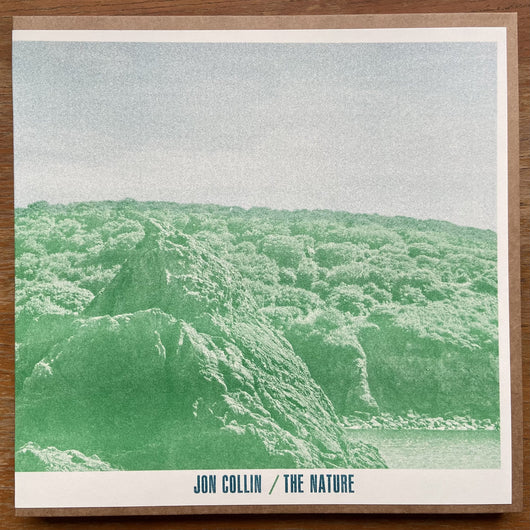
Jon Collin - The Nature LP
Regular price
$25.00
Sale
Acoustic slide guitar improvisations accompanied by external arbitrary sounds, natural and otherwise; recorded in and outside, with and without electricity, in Stockport and Stockholm, 2016–17.
'What sounds tend to get silenced in the production of a record? Sounds are a perpetual and dynamic property of all landscapes but the walls and circuits of music studios largely exclude biophonic, geophonic and anthrophonic ambient sounds. If the unintended silencing of organisms by a myriad of human activities provides yet another indication of our impact on the planet’s ecosystems should we be concerned about the role of music in normalising this silence? Jon Collin’s conscious broadening of presented sound on this record, most prominently the inclusion of ambient birdsong, sirens, and aviation noise, is not novel and it is not necessarily a response to this question. However, his guitar playing acousmatically smashes the taxonomy of sound used above. It shares palettes and forms with vocalizing and stridulating animals, wind, rain, thunder and electromechanical devices without aping them or labouring under the conceit that it might meaningfully communicate with them. It is, however, attuned to the fact that a soundscape is necessarily made up of interfering and integrated signals (some tropical birds use protracted pure tones in environments with persistent geophonic sounds of wind and rain; song sparrows sing lower, great tits higher, nightingales louder and robins at night in noisy urban environments). This approach choruses, without clarion calling, the quandary and challenge of collectively accepting responsibility for our species’ impact on the stability of ecological systems whilst understanding that we are not external to them.'
– Jon Marshall, 2017
'What sounds tend to get silenced in the production of a record? Sounds are a perpetual and dynamic property of all landscapes but the walls and circuits of music studios largely exclude biophonic, geophonic and anthrophonic ambient sounds. If the unintended silencing of organisms by a myriad of human activities provides yet another indication of our impact on the planet’s ecosystems should we be concerned about the role of music in normalising this silence? Jon Collin’s conscious broadening of presented sound on this record, most prominently the inclusion of ambient birdsong, sirens, and aviation noise, is not novel and it is not necessarily a response to this question. However, his guitar playing acousmatically smashes the taxonomy of sound used above. It shares palettes and forms with vocalizing and stridulating animals, wind, rain, thunder and electromechanical devices without aping them or labouring under the conceit that it might meaningfully communicate with them. It is, however, attuned to the fact that a soundscape is necessarily made up of interfering and integrated signals (some tropical birds use protracted pure tones in environments with persistent geophonic sounds of wind and rain; song sparrows sing lower, great tits higher, nightingales louder and robins at night in noisy urban environments). This approach choruses, without clarion calling, the quandary and challenge of collectively accepting responsibility for our species’ impact on the stability of ecological systems whilst understanding that we are not external to them.'
– Jon Marshall, 2017


